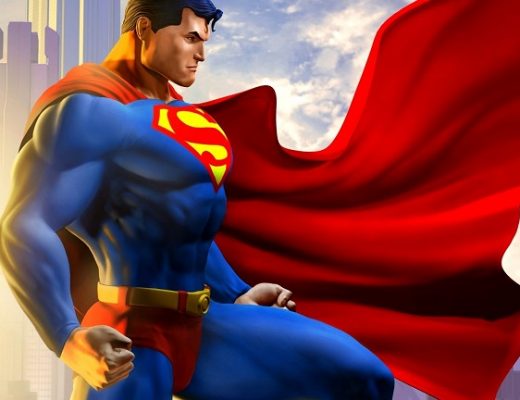But what thinks Lazarus? Can he warm his blue hands by holding them up to the grand northern lights? Would not Lazarus rather be in Sumatra than here? Would he not far rather lay him down lengthwise along the line of the equator; yea, ye gods! go down to the fiery pit itself, in order to keep out this frost?
Now, that Lazarus should lie stranded there on the curbstone before the door of Dives, this is more wonderful than that an iceberg should be moored to one of the Moluccas. Yet Dives himself, he too lives like a Czar in an ice palace made of frozen sighs, and being a president of a temperance society, he only drinks the tepid tears of orphans.
But no more of this blubbering now, we are going a-whaling, and there is plenty of that yet to come. Let us scrape the ice from our frosted feet, and see what sort of a place this “Spouter” may be.
Entering that gable-ended Spouter-Inn, you found yourself in a wide, low, straggling entry with old-fashioned wainscots, reminding one of the bulwarks of some condemned old craft. On one side hung a very large oilpainting so thoroughly besmoked, and every way defaced, that in the unequal crosslights by which you viewed it, it was only by diligent study and a series of systematic visits to it, and careful inquiry of the neighbors, that you could any way arrive at an understanding of its purpose. Such unaccountable masses of shades and shadows, that at first you almost thought some ambitious young artist, in the time of the New England hags, had endeavored to delineate chaos bewitched. But by dint of much and earnest contemplation, and oft repeated ponderings, and especially by throwing open the little window towards the back of the entry, you at last come to the conclusion that such an idea, however wild, might not be altogether unwarranted.
But what most puzzled and confounded you was a long, limber, portentous, black mass of something hovering in the centre of the picture over three blue, dim, perpendicular lines floating in a nameless yeast. A boggy, soggy, squitchy picture truly, enough to drive a nervous man distracted. Yet was there a sort of indefinite, half-attained, unimaginable sublimity about it that fairly froze you to it, till you involuntarily took an oath with yourself to find out what that marvellous painting meant. Ever and anon a bright, but, alas, deceptive idea would dart you through.—It’s the Black Sea in a midnight gale.—It’s the unnatural combat of the four primal elements.—It’s a blasted heath.—It’s a Hyperborean winter scene.—It’s the breaking-up of the icebound stream of Time. But at last all these fancies yielded to that one portentous something in the picture’s midst. THAT once found out, and all the rest were plain. But stop; does it not bear a faint resemblance to a gigantic fish? even the great leviathan himself?
In fact, the artist’s design seemed this: a final theory of my own, partly based upon the aggregated opinions of many aged persons with whom I conversed upon the subject. The picture represents a Cape-Horner in a great hurricane; the half-foundered ship weltering there with its three dismantled masts alone visible; and an exasperated whale, purposing to spring clean over the craft, is in the enormous act of impaling himself upon the three mast-heads.
The opposite wall of this entry was hung all over with a heathenish array of monstrous clubs and spears. Some were thickly set with glittering teeth resembling ivory saws; others were tufted with knots of human hair; and one was sickle-shaped, with a vast handle sweeping round like the segment made in the new-mown grass by a long-armed mower. You shuddered as you gazed, and wondered what monstrous cannibal and savage could ever have gone a death-harvesting with such a hacking, horrifying implement. Mixed with these were rusty old whaling lances and harpoons all broken and deformed. Some were storied weapons. With this once long lance, now wildly elbowed, fifty years ago did Nathan Swain kill fifteen whales between a sunrise and a sunset. And that harpoon—so like a corkscrew now—was flung in Javan seas, and run away with by a whale, years afterwards slain off the Cape of Blanco. The original iron entered nigh the tail, and, like a restless needle sojourning in the body of a man, travelled full forty feet, and at last was found imbedded in the hump.
Crossing this dusky entry, and on through yon low-arched way—cut through what in old times must have been a great central chimney with fireplaces all round—you enter the public room. A still duskier place is this, with such low ponderous beams above, and such old wrinkled planks beneath, that you would almost fancy you trod some old craft’s cockpits, especially of such a howling night, when this corner-anchored old ark rocked so furiously. On one side stood a long, low, shelf-like table covered with cracked glass cases, filled with dusty rarities gathered from this wide world’s remotest nooks. Projecting from the further angle of the room stands a dark-looking den—the bar—a rude attempt at a right whale’s head. Be that how it may, there stands the vast arched bone of the whale’s jaw, so wide, a coach might almost drive beneath it. Within are shabby shelves, ranged round with old decanters, bottles, flasks; and in those jaws of swift destruction, like another cursed Jonah (by which name indeed they called him), bustles a little withered old man, who, for their money, dearly sells the sailors deliriums and death.


No Comments